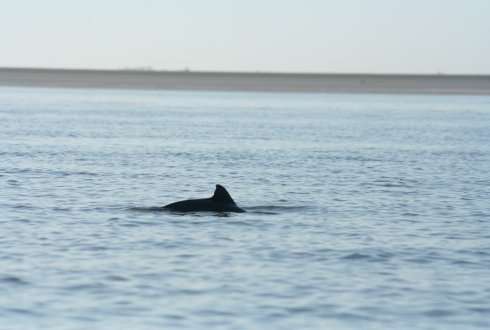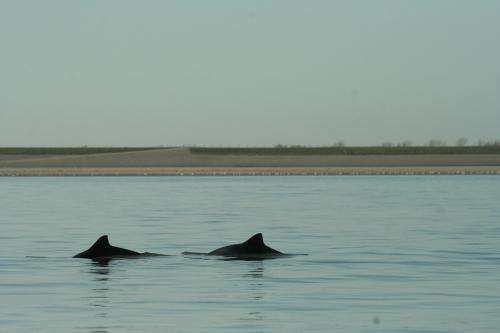The surprising conclusion of the doctoral research project on the feeding ecology of porpoises by Okka Jansen at Wageningen University is that the Eastern Scheldt may be an ecological trap. She also discovered that more than just examinations of stomach contents are required to find out what porpoises eat. The analyses of stable isotopes and fatty acids have produced astonishing new data as well as more accurate information.
Coastal waters are rich marine ecosystems. Porpoises are the most common small cetacean species in the Netherlands' coastal waters. The numbers and distribution of porpoises have radically changed in recent decades. The question is: what is driving the change? Within this context, doctoral candidate Okka Jansen studied the feeding ecology of the porpoise in the Netherlands' coastal waters.
'Most studies of the feeding ecology of porpoises are based on examinations of stomach contents,' says Okka Jansen. 'But this method falls a long way short of the mark in telling us everything about what they eat. I performed additional research using two other techniques: analysis of stable isotopes and analysis of fatty acids in porpoises and their prey. These three methods combined give the most accurate reflection of the diet of porpoises.' The analysis of stable isotopes (from bone and muscle tissue) mainly provides information about the location in which and how high in the food chain the animals have foraged. Fatty-acid analysis indicates the most probable composition of the diet of porpoises in recent months.
Porpoises in Marsdiep.
'The combination of these three techniques is unique in sea-mammal research,' says doctoral thesis supervisor Prof Peter Reijnders. 'Examination of the stomach contents only enables you to see recent food ingestion, whereas fatty-acid analyses allow you to trace back what animals have eaten over a slightly longer period, and analyses of stable isotopes (extracted from bone tissue) indicate what they have eaten over a much longer period. In this way, Okka's research showed that the diet of porpoises in the Netherlands' coastal waters consists of inshore fish species, such as gudgeon, sprat, and common dragonet as well as schooling species from deeper waters further from the coast, which were eaten a longer time ago, such as mackerel and herring. The porpoise is in essence an opportunistic predator. By contrast, the white-beaked dolphin, which she also studied, turned out to be much more of a specialist; with the exception of extremely young animals, the staple part of their diet always consists of cod and whiting, irrespective of their habitat.'
An extra windfall in the analyses of stable isotopes, which provide information about where and when animals have eaten, was the discovery that the Eastern Scheldt may be a form of ecological trap for porpoises. 'This study shows that the storm surge barrier has not only led to changes in physical processes in the Eastern Scheldt estuary, but also affects the porpoises swimming into the Eastern Scheldt through the partially-open flood defences,' says Okka Jansen. 'I noticed that there were similarities as well as differences in the concentrations of stable isotopes between Eastern Scheldt and North Sea porpoises. From the data, you can conclude that the animals in the Eastern Scheldt were not born there, but had been living and feeding in the estuary for a considerable amount of time. They can swim in, but cannot or apparently do not dare to swim out again. Because the mortality rate of porpoises in the Eastern Scheldt is higher than in the Netherlands coastal zone, the estuary area could form an ecological trap. This shows that even partially-open structures, which should limit the loss, decline and fragmentation of natural habitats, can still have a significant impact on the numbers and distribution of migratory sea mammals. For this reason, it is important to take the possible effects on sea mammals into consideration in environmental assessment reports for major infrastructural works in marine areas.'
Provided by Wageningen University






















